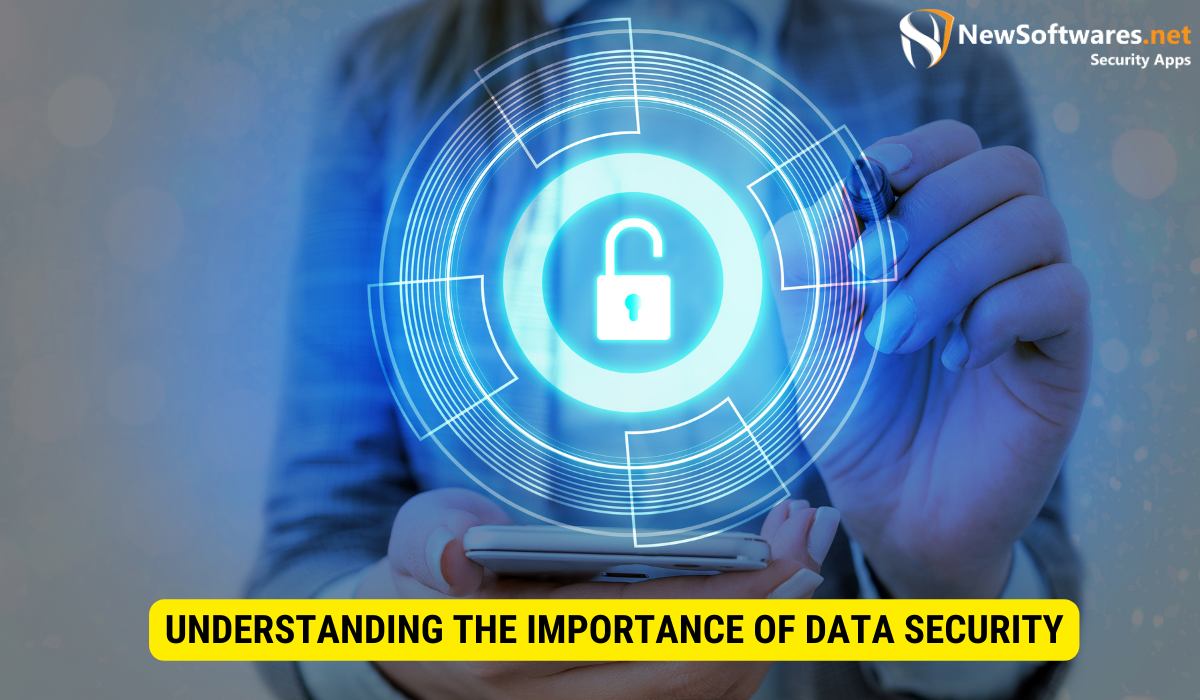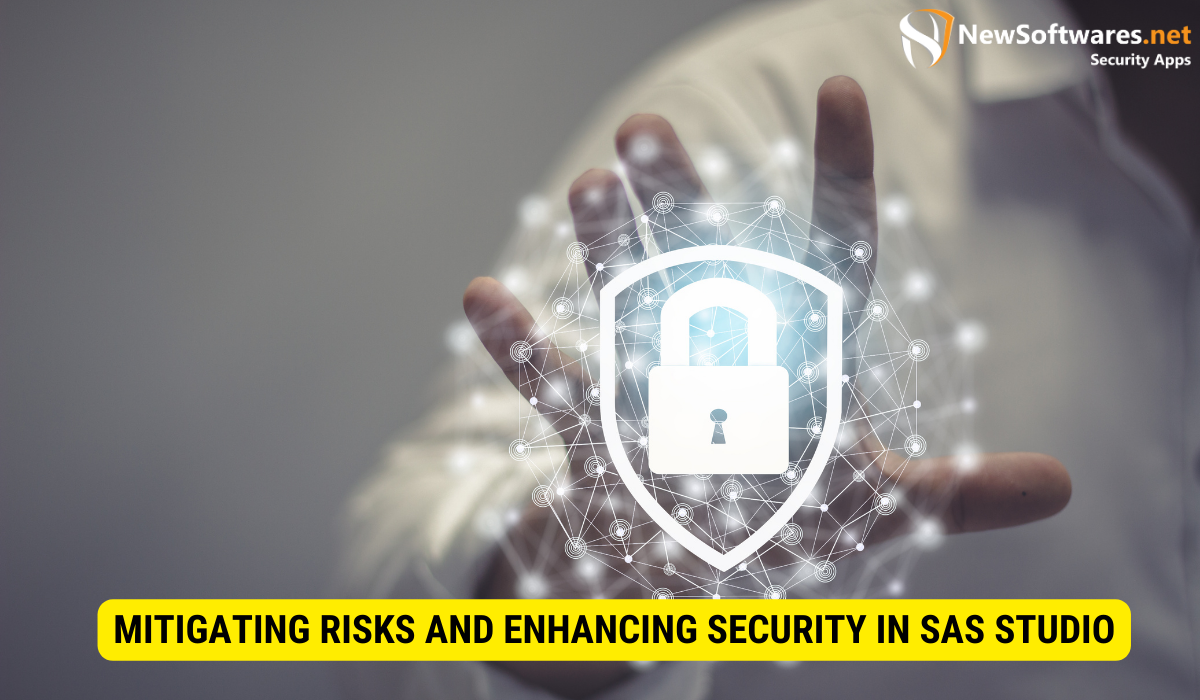SAS Studio provides robust security features, including data encryption, user authentication, and access control, to ensure the protection of confidential data. However, potential vulnerabilities, such as weak passwords and software vulnerabilities, should be addressed through best practices like strong password policies and regular software updates. Future developments may further enhance security.
SAS Studio is a powerful tool that allows users to analyze and manipulate data, making it a valuable asset for businesses. However, when it comes to handling confidential data, ensuring its security becomes paramount. In this article, we will evaluate the security of SAS Studio and explore its features, vulnerabilities, and best practices for secure data handling.
Understanding the Importance of Data Security

Data security is a critical concern for businesses, especially when dealing with sensitive and confidential information. Breaches and unauthorized access can result in financial losses, legal consequences, and damage to a company’s reputation. Therefore, it is essential to have robust security measures in place to protect confidential data.
The Role of Confidential Data in Business
Confidential data holds a significant role in business operations. It includes sensitive customer information, financial records, intellectual property, and trade secrets. Maintaining the confidentiality of this data is crucial for maintaining trust with customers, complying with regulations, and gaining a competitive edge.
Let’s dive deeper into the various types of confidential data that businesses deal with on a daily basis. Customer information, such as names, addresses, and contact details, is essential for businesses to provide personalized services and maintain strong customer relationships. Financial records, including bank account details and credit card information, are critical for processing payments and ensuring secure transactions. Intellectual property, such as patents, trademarks, and copyrights, represents a company’s innovative ideas and unique creations, giving them a competitive advantage in the market. Lastly, trade secrets, such as manufacturing processes and marketing strategies, are valuable assets that companies guard closely to maintain their market position.
Key Principles of Data Security
There are several key principles that organizations should follow to ensure data security:
- Confidentiality: Implement mechanisms to protect data from unauthorized access.
Confidentiality is the foundation of data security. Organizations must establish strict access controls and encryption methods to prevent unauthorized individuals from gaining access to confidential data. By implementing strong authentication measures, such as passwords, biometrics, and two-factor authentication, businesses can ensure that only authorized personnel can access sensitive information.
- Integrity: Safeguard data from unauthorized modification, ensuring its accuracy and reliability.
Data integrity ensures that information remains unchanged and uncorrupted throughout its lifecycle. To maintain data integrity, businesses employ various techniques, such as checksums, digital signatures, and access controls. These measures ensure that data is protected from unauthorized modifications, guaranteeing its accuracy and reliability.
- Availability: Ensure data is accessible and available when needed, while also protected against system failures or disasters.
Availability is crucial for businesses to operate smoothly. Organizations must implement redundant systems, backup strategies, and disaster recovery plans to ensure that data remains accessible even in the event of system failures or natural disasters. By having multiple copies of data stored in different locations, businesses can minimize downtime and continue their operations without disruption.
- Auditability: Maintain logs and audit trails to track data access and detect any suspicious activities or unauthorized changes.
Auditability plays a vital role in identifying and investigating security incidents. By maintaining detailed logs and audit trails, organizations can track data access, monitor user activities, and detect any suspicious behavior. These logs serve as valuable evidence in forensic investigations and help organizations take appropriate actions to mitigate risks and prevent future security breaches.
- Compliance: Adhere to relevant regulations and industry standards to protect sensitive data.
Compliance with regulations and industry standards is essential to ensure the protection of sensitive data. Organizations must stay updated with the latest legal requirements and industry best practices to safeguard confidential information. By implementing security controls and conducting regular audits, businesses can demonstrate their commitment to data security and avoid legal penalties.
An Overview of SAS Studio
SAS Studio is a web-based interface that provides users with an integrated development environment for utilizing SAS analytical capabilities. It offers a range of features for data management, analysis, and reporting.
Core Features of SAS Studio
SAS Studio offers a variety of powerful features that enable efficient data analysis and manipulation:
- Data Preparation: Users can import, clean, and format data for analysis.
- Statistical Analysis: SAS Studio provides a wide range of statistical procedures and tools for analyzing data.
- Visualization: Users can create compelling visual representations of data to gain insights and communicate findings.
- Reporting: SAS Studio allows the creation of customized reports and presentations.
How SAS Studio Manages Data
SAS Studio follows industry best practices to ensure the security and integrity of data:
- Data Encryption: SAS Studio uses encryption algorithms to protect data during transmission and storage.
- User Authentication: Access to SAS Studio is controlled through user authentication mechanisms, including username/password or single sign-on.
- Access Control: SAS Studio provides fine-grained access control, allowing administrators to define privileges and permissions for different user roles.
Analyzing the Security Features of SAS Studio
Now let’s delve deeper into the security features provided by SAS Studio to understand how it ensures the protection of confidential data.
Data Encryption in SAS Studio
Encryption is a fundamental component of data security. SAS Studio implements secure communication protocols such as Transport Layer Security (TLS) to encrypt data during transmission. Additionally, it supports encryption mechanisms for data at rest, ensuring that stored data remains safeguarded.
User Authentication and Access Control
SAS Studio employs robust user authentication mechanisms, allowing administrators to verify the identity of users. This ensures that only authorized individuals can access the system. Furthermore, access control mechanisms enable administrators to define granular permissions, controlling which users can access specific datasets, programs, or functions.
Potential Vulnerabilities in SAS Studio
While SAS Studio offers robust security features, it is essential to be aware of potential vulnerabilities that could expose confidential data to risks.
Common Security Risks in Data Handling Software
Data handling software, including SAS Studio, may be vulnerable to various security risks, such as:
- Weak Passwords: Users may set weak or easily guessable passwords, making it easier for attackers to gain unauthorized access.
- Software Vulnerabilities: Like any software, SAS Studio may have vulnerabilities that could be exploited by attackers.
- Phishing Attacks: Social engineering attacks, such as phishing, can trick users into revealing their credentials or other sensitive information.
Specific Concerns for SAS Studio
While SAS Studio is designed with security in mind, there are specific concerns that users should be aware of:
- Third-Party Integrations: Integrations with external systems or libraries may introduce additional security risks if they are not properly vetted.
- Unattended Sessions: Leaving a SAS Studio session unattended can open doors for potential misuse by unauthorized individuals.
Mitigating Risks and Enhancing Security in SAS Studio

Although no system is entirely immune to security risks, there are measures that organizations can take to mitigate risks and enhance security when using SAS Studio.
Best Practices for Secure Data Handling in SAS Studio
Follow these best practices to ensure secure data handling in SAS Studio:
- Implement Strong Password Policies: Enforce password complexity rules and educate users about the importance of using strong, unique passwords.
- Keep Software Up to Date: Regularly update SAS Studio to leverage the latest security patches and bug fixes.
- Secure Third-Party Integrations: Conduct thorough security assessments of any third-party integrations and ensure they adhere to security best practices.
- Monitor User Activity: Implement logging and monitoring mechanisms to detect any suspicious activities or unauthorized access.
- Train Users: Provide regular training on best practices for data security and raise awareness about potential risks.
Future Developments for Improved Security in SAS Studio
SAS Institute continuously works to enhance the security of SAS Studio. Future developments may include additional encryption options, more advanced access control mechanisms, and enhanced integration with authentication providers.
Key Takeaways
In summary, when evaluating the security of SAS Studio for handling confidential data:
- SAS Studio offers core features for efficient data analysis and manipulation.
- Data security is of utmost importance to protect confidential information.
- SAS Studio provides encryption, user authentication, and access control mechanisms to ensure data security.
- There are potential vulnerabilities in SAS Studio, such as weak passwords and software vulnerabilities.
- Implementing best practices, such as strong password policies and regular software updates, can enhance security in SAS Studio.
FAQs
Can SAS Studio handle sensitive customer information securely?
Yes, SAS Studio is designed to handle sensitive customer information securely. It provides robust data encryption, user authentication, and access control mechanisms to ensure the confidentiality and integrity of sensitive data.
What are the potential risks of using SAS Studio?
Potential risks of using SAS Studio include weak passwords, software vulnerabilities, and phishing attacks. Users should follow best practices for data security and stay alert to protect against these risks.
How can organizations enhance data security in SAS Studio?
Organizations can enhance data security in SAS Studio by implementing strong password policies, regularly updating software, securing third-party integrations, monitoring user activity, and providing user training on data security best practices.
What future developments can we expect for security in SAS Studio?
SAS Institute is continuously working on enhancing the security of SAS Studio. Future developments may include additional encryption options, advanced access control mechanisms, and improved integration with authentication providers.
Is SAS Studio suitable for handling confidential data in regulated industries?
Yes, SAS Studio is suitable for handling confidential data in regulated industries. It provides the necessary security features and compliance mechanisms to meet regulatory requirements and ensure the protection of confidential information.
Conclusion
Ensuring the security of confidential data is crucial for businesses, and SAS Studio offers robust features to support secure data handling. By implementing best practices, organizations can further enhance security and mitigate potential risks. With continuous advancements in security measures, SAS Studio remains a reliable tool for analyzing and handling confidential data.
